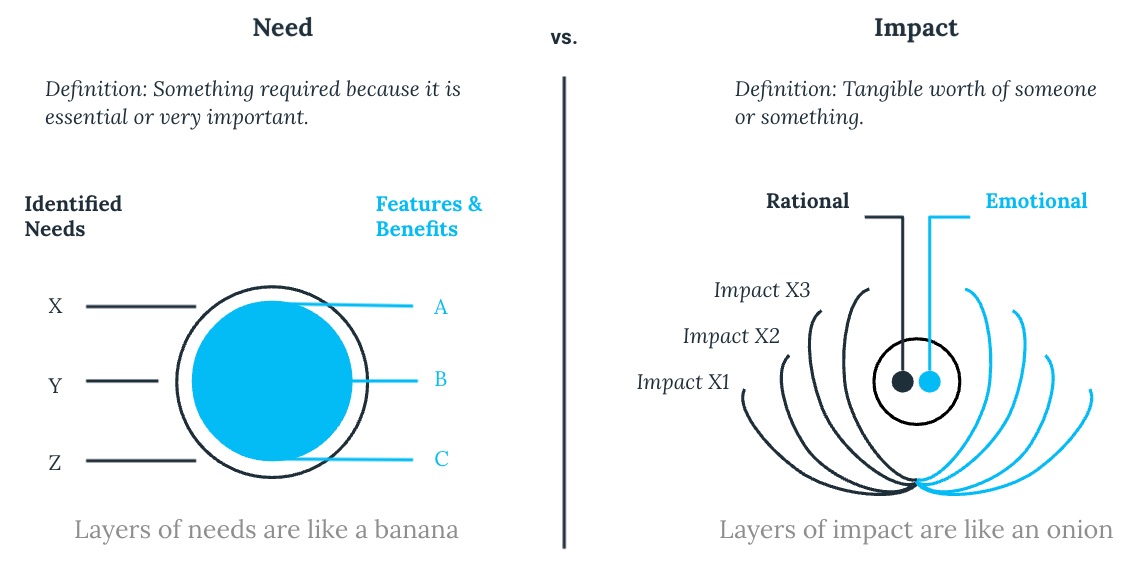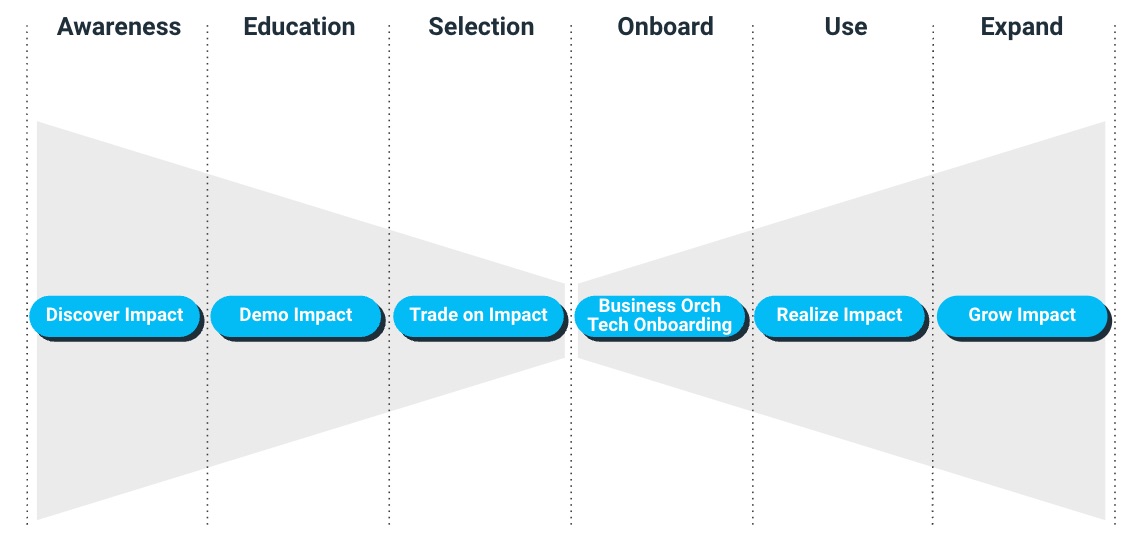If your sales team is still talking about needs and benefits, then they aren’t giving customers what they want. The focus in today’s world should be Impact.
What exactly do we mean by Impact? Human beings experience impact in two ways: rational and emotional.
- Rational impact is measurable using facts and figures. Does it help save on costs? Does it increase revenue? Rational impacts usually refer to benefits or impacts that affect the company overall.
- Emotional impact is based on feelings and experiences. This kind of impact centers on ideas that aren’t as easily quantifiable, such as user experience or employee experience. Emotional impacts usually refer to benefits or impacts that affect the individual employee; for instance, your prospect might express that they need your platform in order to “save four hours of processing time each week” or “give me peace of mind that my department’s crucial data is protected.”
Research shows that people tend to make emotional decisions first, then validate them later on with facts and figures. Thus, emotional impact supersedes rational impact.

Figure 1. The difference between Need and Impact
In traditional sales methodologies, sales teams identify a customer’s needs and talk about the benefits their product or service has over those of the competition. This can be a mistake, because it focuses completely on rational impact and ignores the emotional impact that the prospect is looking to achieve.
Your customer’s needs are more like an onion, with overlapping layers that can be peeled back by asking the right questions. By diagnosing a customer’s needs, your sales team can uncover the underlying impact they are looking to achieve. And impact is what differentiates the nice-to-have from the must-have solutions.
Impact from start to finish
Demonstrating rational and emotional impact isn’t a one-time proposition. If you’re using the conventional sales and marketing funnel, your team should be thinking about impact every step along the way toward the sale.
But for the thousands of high-growth companies that use a recurring revenue business model, the traditional funnel no longer applies. These businesses instead are using the Recurring Revenue Bowtie model, which acknowledges that 72 to 93% of a customer’s lifetime value happens after the initial deal. This makes demonstrating impact more important than ever.

Figure 2. The importance of Impact, from start to finish
When we focus on expansion sales specifically, we have to look backwards. What were the customer’s pain points before you started working together? How were you able to solve them together? Has that customer actually achieved the full impact that they were seeking when they first sought out your solution? A common trap of companies is to focus entirely on adoption and usage data: those are focused on your own needs rather than the customer’s needs, and they are all about rational impact. To tap into the emotional impact, point to real customer problems that you helped to solve, and measure the results in a way that your customer can connect to.
Once you’ve accomplished that, you can start looking forward toward your future relationship with the customer. Demonstrating emotional impact is a powerful way to plant the seeds of expansion.

